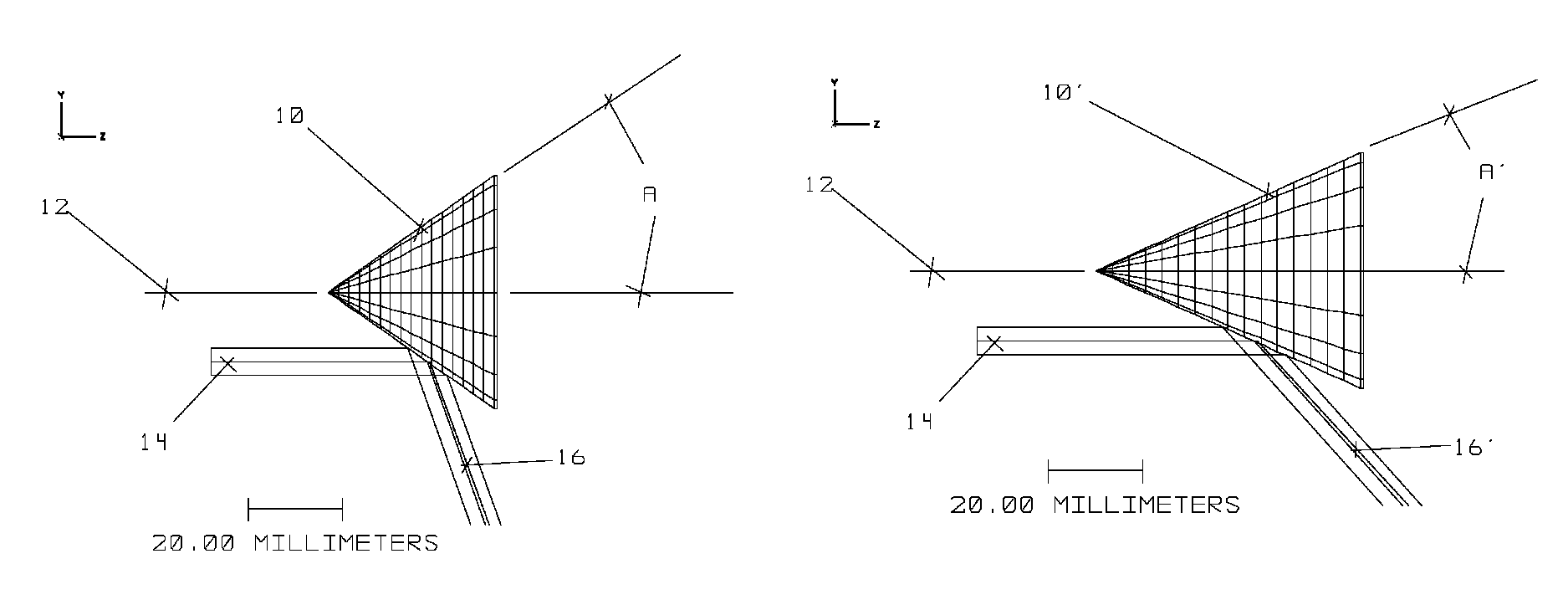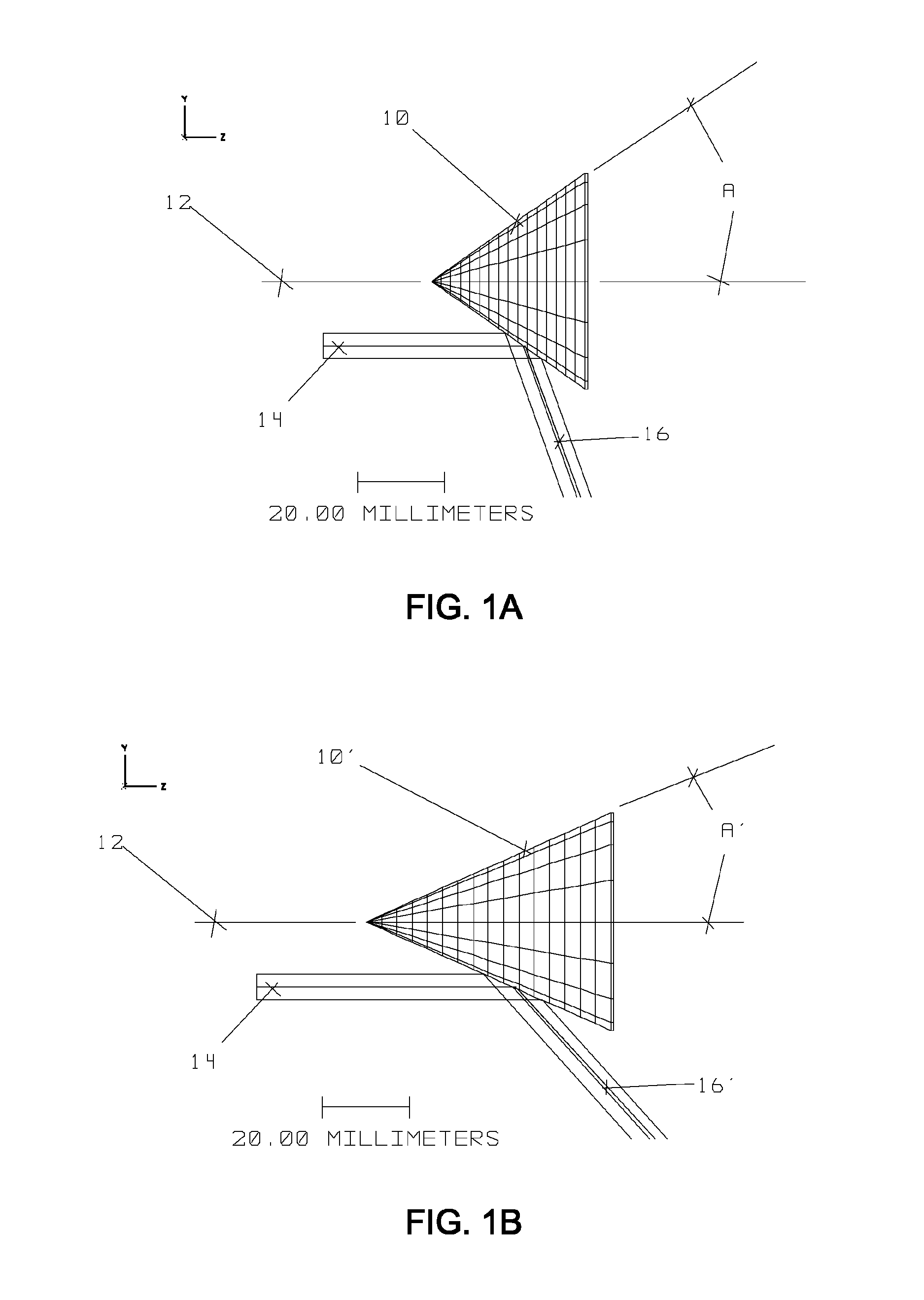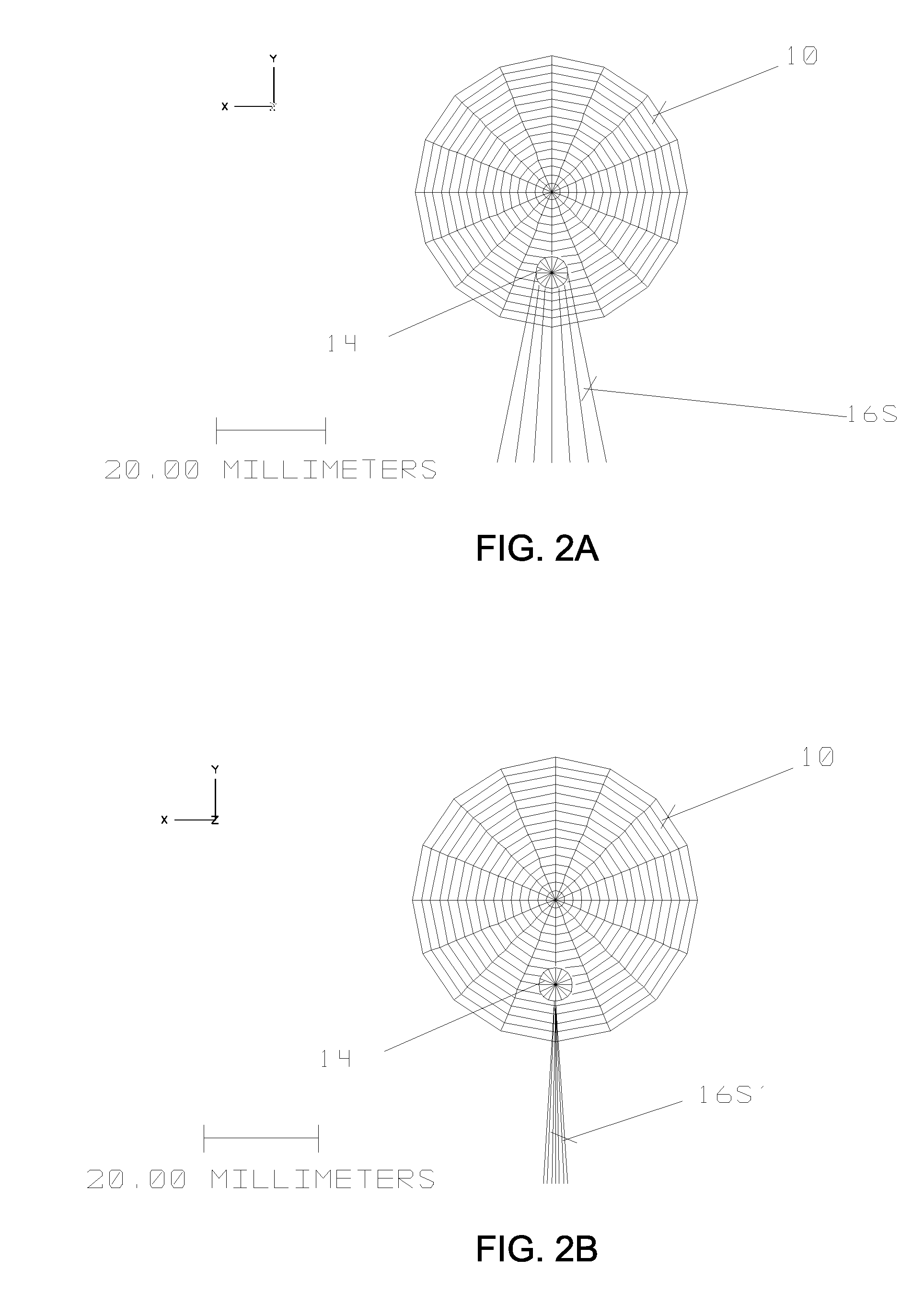Optical pattern generators using axicon segments
a technology of optical pattern generator and axicon segment, which is applied in the field of optical pattern generation of figures, can solve the problems of limiting the rate at which patterns can be produced, unsuitable for certain applications, and restricting the pattern generation rate, so as to increase the duty cycle, reduce the width of the optical beam on the axicon segment, and increase the overall throughput
- Summary
- Abstract
- Description
- Claims
- Application Information
AI Technical Summary
Benefits of technology
Problems solved by technology
Method used
Image
Examples
Embodiment Construction
[0043]FIG. 1A is a diagram showing reflection in the meridional plane of an incident optical beam 14 from a reflective axicon surface 10, which is a surface of revolution about the axis of revolution 12. In this case, the axicon has the shape of a right circular cone. The grid superimposed on the axicon 10 in FIG. 1A (and in many of the other Figures) is an artifact of the drawing program; it is not meant to imply that each trapezoidal area within the grid is piecewise flat. The included angle of the axicon is marked A. This included angle is half the apex angle of the cone from which the axicon is generated. The reflected optical beam 16 is also shown. Because the axicon surface 10 is a surface of revolution, rotation about the axis of revolution 12 does not change the surface shape and the reflected optical beam 16 does not change direction of propagation as the axicon surface 10 is rotated.
[0044]FIG. 1B is the same as FIG. 1A, except the axicon 10′ has a different included angle ...
PUM
 Login to View More
Login to View More Abstract
Description
Claims
Application Information
 Login to View More
Login to View More - R&D
- Intellectual Property
- Life Sciences
- Materials
- Tech Scout
- Unparalleled Data Quality
- Higher Quality Content
- 60% Fewer Hallucinations
Browse by: Latest US Patents, China's latest patents, Technical Efficacy Thesaurus, Application Domain, Technology Topic, Popular Technical Reports.
© 2025 PatSnap. All rights reserved.Legal|Privacy policy|Modern Slavery Act Transparency Statement|Sitemap|About US| Contact US: help@patsnap.com



